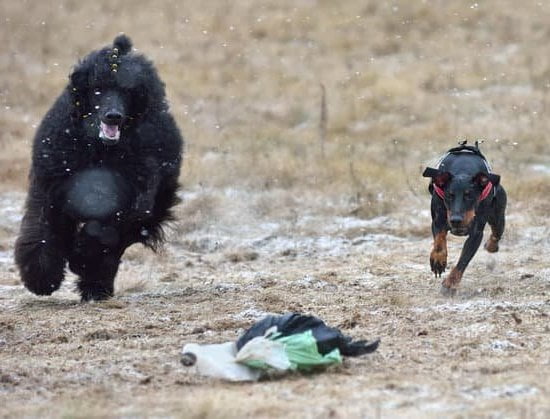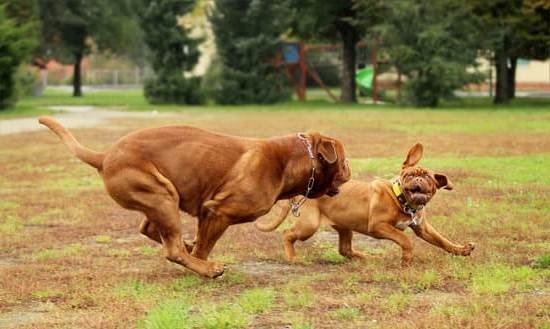There is a reason that youtube is full of dog crate training videos – it works! Dogs are den animals and like to have a place where they can feel safe and secure. Putting your dog in a crate when you are not able to watch him will help to prevent him from getting into trouble and also help to potty train him more quickly.
The first step in crate training your dog is to get him comfortable with the idea of being in the crate. Start by putting the crate in a quiet, low-traffic area of your home and putting some of your dog’s favorite toys and treats in the crate. Let your dog explore the crate on his own and don’t force him to go in if he doesn’t want to. Once your dog is comfortable going into the crate, you can start to use it as a place to put him when you can’t watch him.
If your dog is having a hard time adjusting to being in the crate, start by putting him in for a very short time (5-10 minutes) and gradually increase the amount of time he spends in the crate. If your dog barks or whines while in the crate, don’t give him any attention – this will only reinforce the behavior. If he is quiet, praise him and give him a treat.
Crate training can be a great way to help your dog adjust to life in your home and can make house training a breeze. It’s important to be patient and consistent with your dog while crate training, and soon you will both be enjoying the benefits!
How To Crate Train A Shelter Dog
If you’ve ever adopted a dog from a shelter, you know that they can sometimes be a little…wild. This is because many shelter dogs have never been in a home before and are used to roaming the streets and living on their own. One of the best ways to help these dogs adjust to their new home is to crate train them.
The first step in crate training a shelter dog is to get them comfortable with the crate. You can do this by putting a soft blanket or toy in the crate and feeding them their meals inside of it. Once they’re comfortable going in and out of the crate, you can start closing the door for short periods of time.
The next step is to teach the dog to go into the crate on cue. You can do this by saying “crate” and rewarding them with a treat when they go inside. Once they’re consistently going into the crate on cue, you can start leaving them in there for short periods of time.
If the dog starts whining or barking in the crate, don’t give in and let them out. This will only reinforce the behavior. Instead, wait until they stop whining or barking and then let them out.
The final step in crate training a shelter dog is to gradually increase the amount of time they spend in the crate. Once they’re able to stay in the crate for long periods of time without whining or barking, you can start using the crate as a place for them to sleep at night.
How To Crate Train My Dog
So you’ve decided you want to crate train your dog. Great! Crate training can be an incredibly effective way to housebreak your dog, and can also be a great way to keep your dog safe and secure when you’re not able to keep an eye on him.
The first step in crate training is to get your dog used to the idea of being in the crate. Start by putting your dog in the crate for very short periods of time – just a minute or two at first. Gradually increase the amount of time your dog spends in the crate, but don’t push him too hard. If your dog starts to get anxious or upset, back off and try again later.
Once your dog is comfortable being in the crate, you can start using it as a tool to housebreak him. Whenever you catch your dog doing something you don’t want him to do – like peeing on the floor – immediately put him in the crate. He’ll quickly learn that if he wants to avoid being put in the crate, he needs to stop peeing on the floor.
Crate training can also be a great way to keep your dog safe and secure when you’re not able to keep an eye on him. If you have to leave your dog home alone, put him in the crate so he can’t get into trouble.
Crate training can be a bit of a challenge, but it’s well worth the effort. With a little patience and perseverance, you can crate train your dog to be a well-behaved and obedient member of the family.
Crate Training Dog Schedule
The first step in crate training your dog is to establish a regular schedule for crate use. Dogs thrive on routine and will quickly learn to expect and look forward to their time in the crate.
During the daytime, crate your dog for short periods of time, gradually increasing the length of time as he becomes more comfortable. For example, start by putting your dog in the crate for 10 minutes and then gradually increase the time to 30 minutes.
At night, crate your dog for longer periods of time. Start by crating him for four hours and then gradually increase the time to eight hours.
If your dog whines or cries in the crate, don’t give in and let him out. This will only reinforce the behavior and he will learn that whining gets him what he wants. Wait until he stops whining or crying and then release him from the crate.
Never leave your dog in the crate for more than eight hours at a time.
How To Crate Train A Rescue Dog
There are a few things you should keep in mind when crate training a rescue dog. Crate training can be an extremely helpful tool in house training a dog, as well as helping to potty train a dog more quickly. It can also be a safe and comfortable place for a dog to retreat to when they need a timeout, or when they’re feeling overwhelmed or anxious.
The key to successful crate training is making sure that the crate is seen as a positive place for the dog. You want the dog to view the crate as their own personal safe space, where they can go to relax and feel secure.
The first step is to get the dog comfortable with the crate. Start by putting a soft blanket or pillow inside the crate, and then placing the dog inside. Give the dog a few treats, and praise them when they go into the crate on their own. Make sure to close the door to the crate while the dog is inside, but don’t force them to stay in there for too long. Gradually increase the amount of time the dog spends in the crate, but always make sure they’re comfortable and happy.
If the dog starts to whine or bark when they’re in the crate, don’t give in and let them out. This will only reinforce the behavior. Instead, wait until they stop whining or barking, and then let them out.
The most important thing to remember when crate training a rescue dog is to be patient and take things slow. It may take a little longer for a rescue dog to get comfortable with the crate, but with patience and persistence, it can be a very successful training tool.

Welcome to the blog! I am a professional dog trainer and have been working with dogs for many years. In this blog, I will be discussing various topics related to dog training, including tips, tricks, and advice. I hope you find this information helpful and informative. Thanks for reading!





